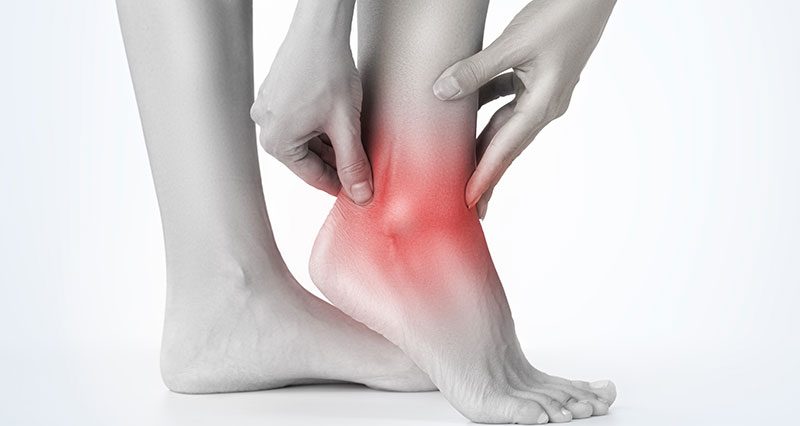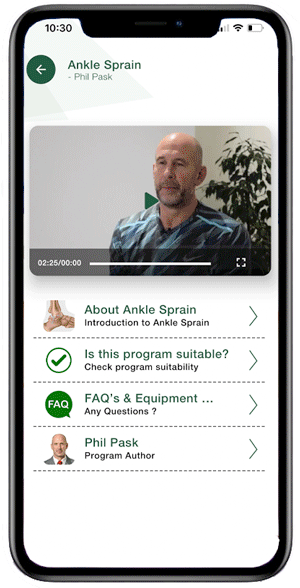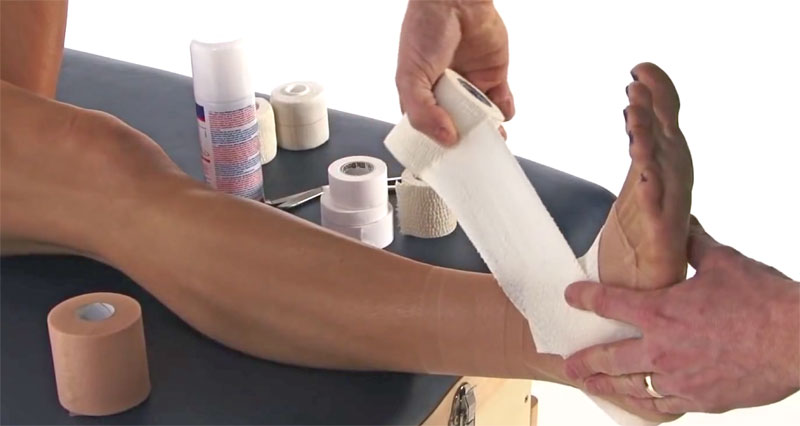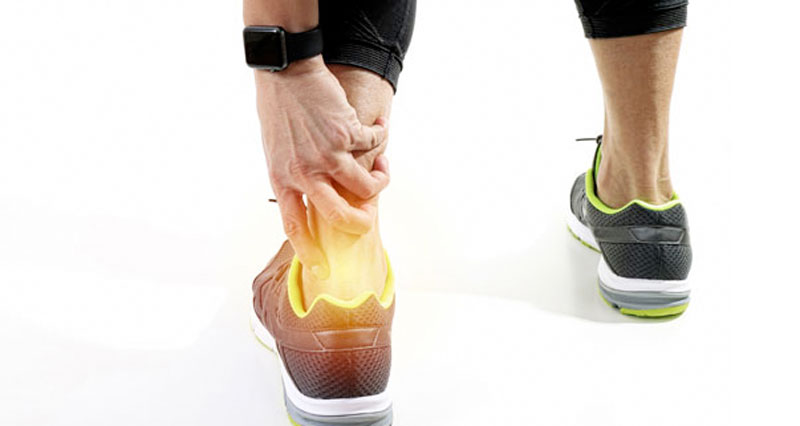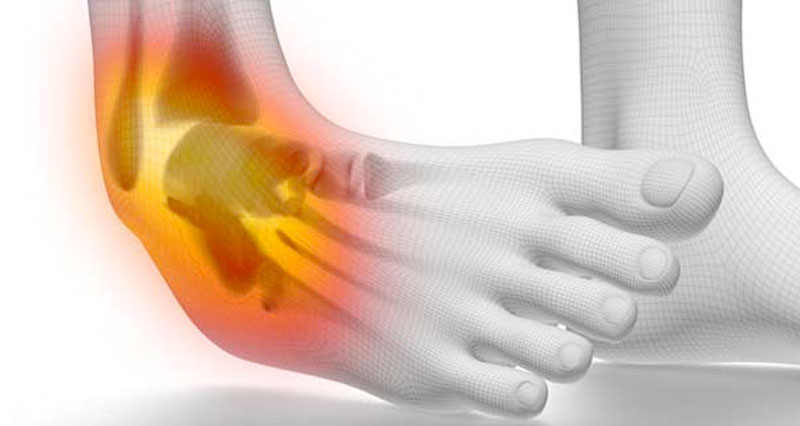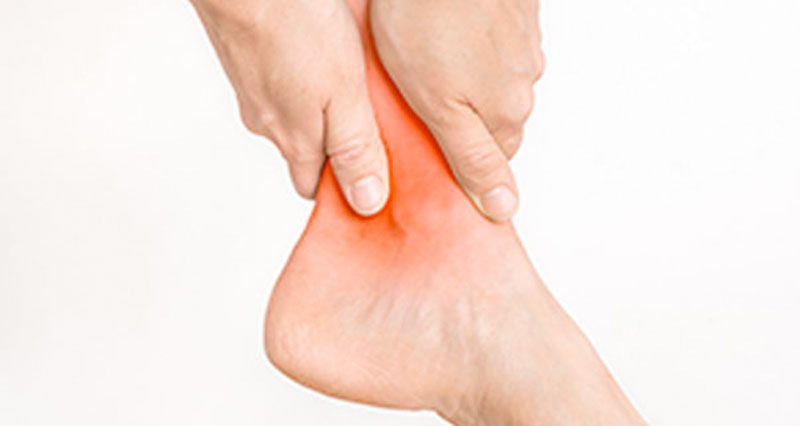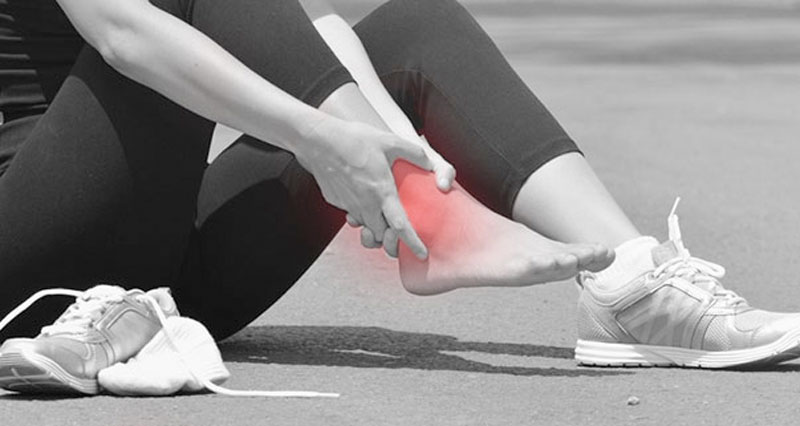Acute ankle pain occurs suddenly and includes sprains, strains, and fractures. Chronic ankle injuries develop gradually over time, often through overuse.
Acute ankle injuries (sprains, strains & fractures)
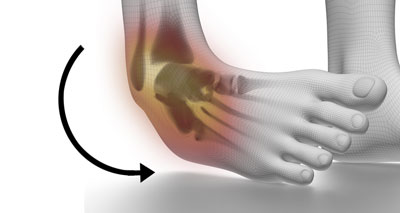
Acute ankle injuries occur suddenly, usually by twisting or turning over on your ankle. They include sprains, strains, fractures, and cartilage injuries
Sprained ankle – a tear or rupture to any of the ligaments in the ankle. The most common is an ‘inversion sprain’ resulting in injury to the ligaments on the outside of the ankle.
Broken ankle (including Potts fracture) – a fracture of any of the ankle bones. You will have instant pain and swelling, and be unable to weight bear.
Osteochondral fracture – fracture of the cartilage, which sits on top of the Talus bone. They commonly occur in combination with an ankle sprain and may not be diagnosed immediately.
Eversion ankle sprain – a sprain or tear of the ligaments on the inside of the ankle. Less common than a normal inversion ankle sprain and often causes a fibula fracture as well.
High ankle sprain – also known as a Syndesmosis injury, is a tear of the anterior tibiofibular ligament which joins the tibia and fibula together just above and at the front of the ankle.
Dislocated ankle – a severe injury which usually happens in conjunction with a fracture or complete rupture of the lateral ankle ligaments.
- More on ankle sprains & fractures
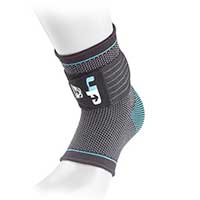
Buy Ankle Supports
Medial ankle (inside)
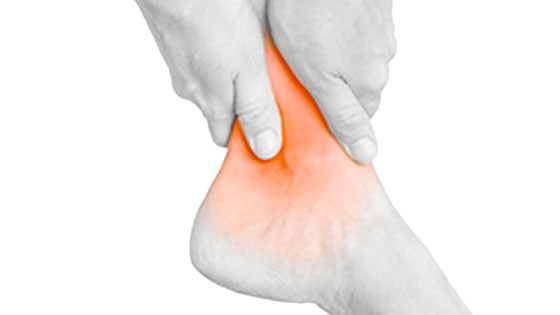
Medial ankle pain refers to the inside of the ankle. This is more likely to be (but not always) gradual onset from overuse.
The most common causes are:
Tibialis posterior tendinopathy – (tendonitis) is an overuse injury causing pain on the inside of the ankle. Pain is felt on the inside of the ankle which may radiate under the arch of the foot.
Medial calcaneal nerve entrapment – has similar symptoms to that of tarsal tunnel syndrome. Pain radiates from the inside of the ankle, under the heel, and into the arch of the foot.
Tarsal tunnel syndrome – nerve compression causing burning pain in the foot, sometimes with pins and needles or numbness. Pain may radiate into the heel and arch of the foot.
Eversion ankle sprain (medial) – is an acute ankle sprain where your foot rolls outwards. Not as common as a normal inversion ankle sprain and often causes a fibula fracture as well.
Broken ankle – a fracture of any of the ankle bones. You will have instant pain and swelling, and be unable to weight bear.
- View all medial ankle injuries
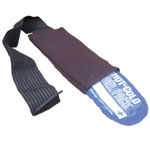
Cold Therapy Wraps
Lateral ankle pain (outside)
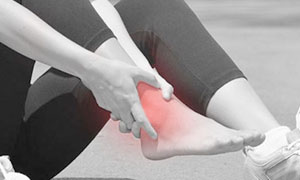
The most common causes of pain on the outside of the ankle are:
Sprained ankle – a tear or rupture to any of the ligaments in the ankle resulting in injury to the ligaments on the outside of the ankle.
Sinus tarsi syndrome – The Sinus tarsi is a small bony canal that runs into the ankle under the talus ankle bone. The damage can be caused by overuse or by a sprained ankle.
Peroneal tendon dislocation – repeated dislocation or slipping of the peroneal tendons over the outside of the ankle causes friction, pain, and inflammation.
Peroneal tendonitis – is an overuse injury causing inflammation and/or degeneration of the peroneal tendons on the outside of the ankle.
- View all lateral ankle pain

Buy Ankle Supports
Anterior ankle pain (front )

Pain at the front of the ankle is more likely to develop gradually, rather than from a sudden twisting or trauma.
The most common causes are:
Ankle impingement – is caused by soft tissues at the front (or back) of the ankle becoming impinged by tiny bone growths.
Tibialis anterior tendonitis – also known as tendinopathy is inflammation or degeneration of the tibialis anterior tendon at the front of the ankle.
- View all anterior ankle pain
Back of the ankle & Achilles
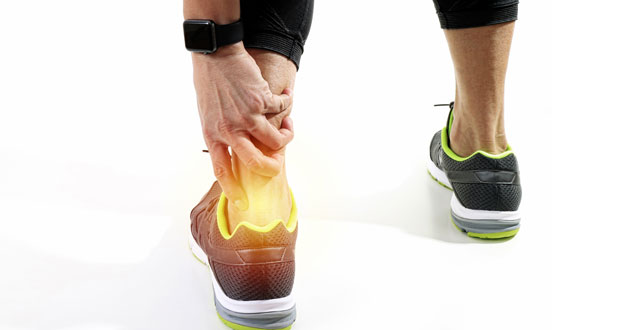
Pain at the back of the ankle is usually (but not always) related to the Achilles tendon. There are a number of conditions affecting the Achilles tendon which have similar symptoms. If you suspect a torn Achilles seek urgent medical attention.
Achilles tendonitis/tendinopathy – inflammation or more often degeneration of the Achilles tendon at the back of the ankle.
Achilles bursitis – inflammation of a small sac of fluid called a bursa, at the back of the heel.
Ankle impingement – is caused by soft tissues at the front (or back) of the ankle becoming impinged by tiny bone growths.
Torn Achilles tendon – a complete rupture of the Achilles tendon. You may feel you have been struck in the back of the leg at the time. Seek medical assistance as soon as possible!
Sever’s disease – causes pain at the back of the heel in children and adolescents.
Insertional Achilles tendonitis – inflammation of the Achilles tendon at the point it inserts at the back of the heel.
- View all Achilles tendon injuries
References
- Doherty C, Delahunt E, Caulfield B et al. The incidence and prevalence of ankle sprain injury: a systematic review and meta-analysis of prospective epidemiological studies. Sports Med 2014;44(1):123–40.
- Bahr R, Bahr IA. Incidence of acute volleyball injuries: a prospective cohort study of injury mechanisms and risk factors. Scand J Med Sci Sports 1997;7(3):166–71
